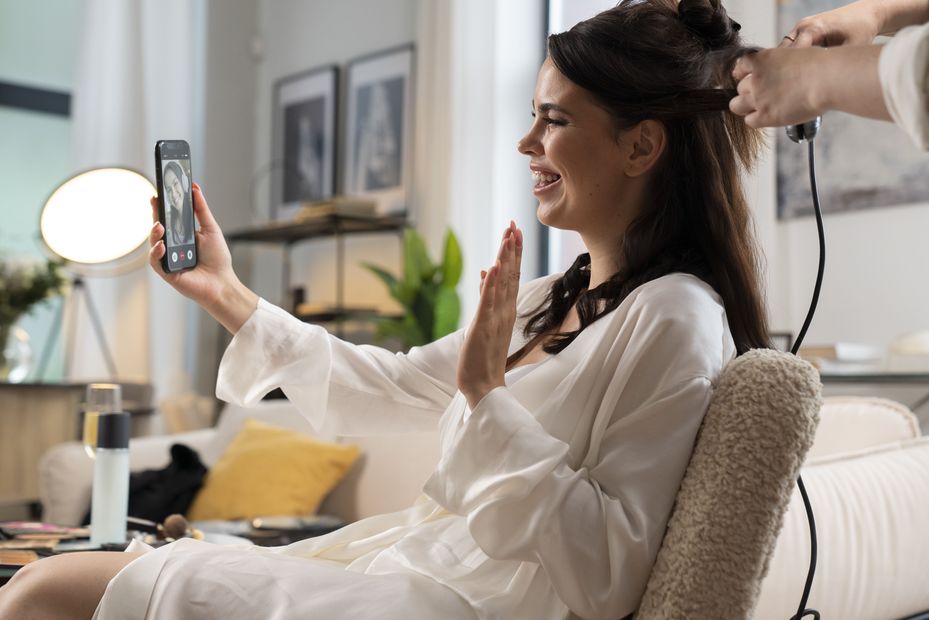The way we shop for beauty products has transformed dramatically in the last few years. From virtual makeup trials to AI-generated skincare recommendations, technology is pushing the boundaries of convenience and personalization. One of the most exciting innovations to hit the wig industry is AI-powered wig try-on tools. For shoppers who once struggled to imagine how a wig might look on them before making a purchase, these new platforms are bridging the gap between online browsing and real-life confidence.
In this article, we’ll explore how AI try-on technology works, why it’s becoming a game-changer for wig shoppers, and what it means for the future of beauty and self-expression.
Why AI Wig Try-Ons Are Booming
In the past, wig shopping often came with uncertainty. You could look at product photos, maybe compare them to model shots, but it was hard to know if a certain cut, curl, or color would truly suit you. This guesswork led to hesitation, disappointment, and in some cases, wasted money.
Today, AI-driven virtual try-on technology allows customers to upload a photo or use a live camera to preview wigs in real time. Just like trying on glasses virtually or testing lipstick shades through apps, this innovation removes the guesswork and builds confidence before purchase.
The boom in AI try-ons is fueled by:
- The rise of e-commerce beauty shopping, especially post-pandemic.
- Increased demand for personalization — shoppers want products that feel made just for them.
- Social media influence, where appearance-driven decisions are becoming more immediate.
- The growing popularity of wigs among not just those with medical hair loss, but also fashion enthusiasts, cosplayers, and trendsetters.
How AI Wig Try-On Technology Works
Behind the smooth user experience is a powerful mix of artificial intelligence, facial recognition, and augmented reality (AR).
- Facial Mapping
AI scans the shape of your face, identifying key points like jawline, cheekbones, and hairline. This helps the software position wigs accurately. - Texture and Motion Simulation
Unlike static images, advanced systems simulate wig movement and texture. This means curls bounce, straight wigs flow, and waves fall naturally as you move your head. - Color Adaptation
AI tools adjust the wig’s shade to match different lighting conditions. A pastel pink wig won’t look the same indoors as it does in sunlight — the software accounts for this, giving a realistic preview. - Style Customization
Many platforms allow users to adjust length, density, and parting. This creates a tailored experience without physically touching a wig.
Benefits of AI Wig Try-Ons
For both customers and wig retailers, the advantages are clear.
1. Confidence Before You Buy
Shoppers can test dozens of styles instantly, ensuring they choose a wig that truly suits their personality and look.
2. Reduced Returns and Waste
Retailers benefit because fewer customers feel the need to return wigs that didn’t meet expectations. This saves money and promotes sustainability.
3. Inclusivity in Beauty
AI tools cater to all skin tones, face shapes, and genders. This inclusivity aligns with modern beauty values, allowing everyone to feel represented and empowered.
4. Enhanced Shopping Experience
The experience feels interactive and fun, turning shopping into more than just a transaction. Trying on wigs virtually is like playing with a new identity without commitment.
5. Data-Driven Recommendations
Some platforms use AI to suggest wig styles based on your features, browsing history, or even personality quizzes — making the journey more personalized.
Popular Platforms Leading the Way
Several wig and beauty brands are already adopting AI try-on features:
- YouCam Makeup: Originally known for makeup try-ons, this app now includes wig and hairstyle simulations.
- Perfect Corp. AR Technology: A leader in virtual try-ons, powering beauty brands worldwide.
- Custom Wig Retailers: Many online wig shops are beginning to integrate AI modules directly into their websites for a seamless user experience.
As competition grows, more affordable and user-friendly options are expected to appear in 2025.
Challenges to Overcome
While revolutionary, AI wig try-ons are not perfect. Some challenges include:
- Accuracy Limits: Lighting, camera quality, and photo angles can affect results.
- Texture Realism: Synthetic and human hair wigs differ, and not all tools capture this nuance perfectly.
- Privacy Concerns: Users need assurance that their photos or live videos are secure and not misused.
- Accessibility: Not all customers are tech-savvy or have devices that support advanced AR functions.
Addressing these issues will be critical for long-term adoption.
The Future of Wig Shopping: What’s Next?
The next stage of AI wig technology is likely to be even more immersive. Here’s what we might see in the near future:
- Full 3D Avatars: Shoppers could upload a photo to create a personalized avatar that mirrors their exact face and body. Wigs could then be tried on in 360 degrees.
- AI Stylists: Instead of just showing options, AI could recommend wigs that best match your lifestyle, wardrobe, or even astrological sign.
- Virtual Shopping Parties: Friends might join online sessions to give feedback in real time while trying wigs together.
- Integration with the Metaverse: Digital wigs for avatars could be paired with real-world purchases, merging online identity with offline style.
Final Thoughts
AI-powered wig try-ons are more than a passing trend — they represent a shift in how people connect with beauty and self-expression. By combining technology and personal style, these tools give shoppers the confidence to explore new looks without fear.
For wig lovers, this is an invitation to experiment boldly. Whether you’re considering your first wig, exploring fantasy colors, or trying gender-neutral styles, AI technology makes the process smoother, more accurate, and a lot more fun.
The future of wig shopping isn’t just about buying hair — it’s about seeing yourself in new ways, instantly and effortlessly.


